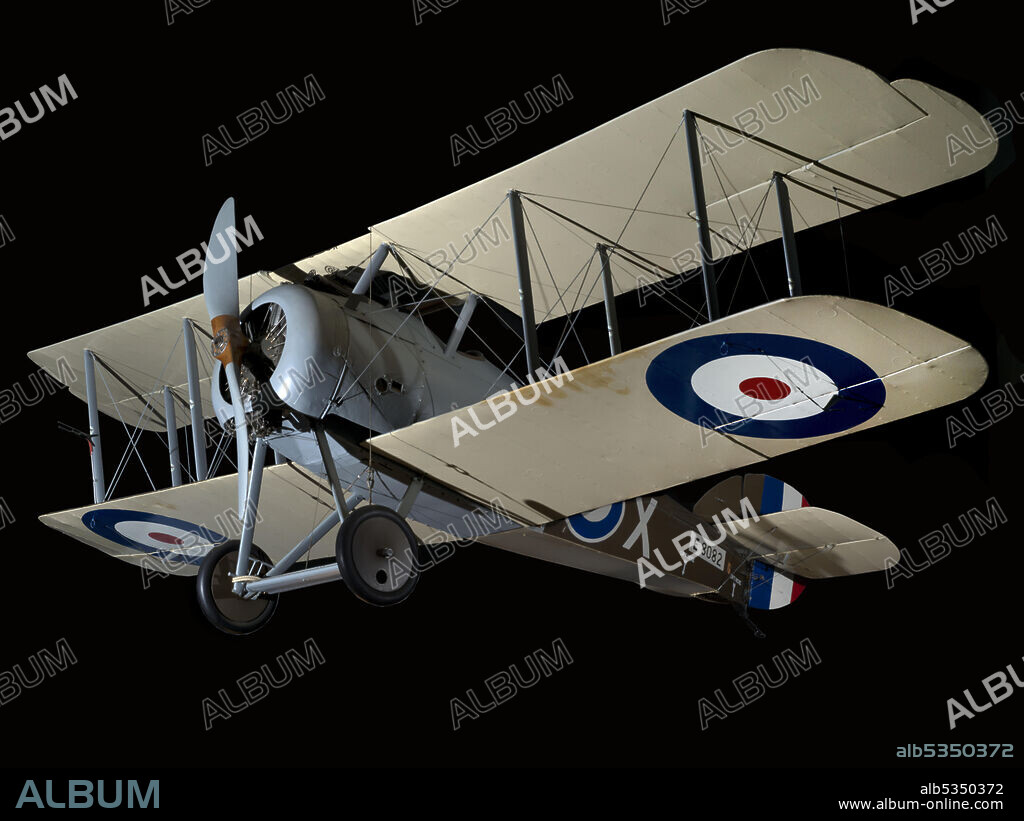alb5350372
SOPWITH AVIATION COMPANY. Sopwith 7F.1 Snipe,1918. Creator: Sopwith Aviation Company.

|
Add to another lightbox |
|
Add to another lightbox |



Author:
Title:
Sopwith 7F.1 Snipe,1918. Creator: Sopwith Aviation Company.
Caption:
Single-engine, single-seat, British-built World War I biplane fighter; 230 horsepower Bentley B.R.2 engine; Olive drab upper surfaces, gray and olive drab fuselage, buff under surfaces. In the spring of 1917, Britain's most famous World War I fighter, the Sopwith Camel, made its debut. Shortly after deliveries to front-line squadrons of the Camel began, Sopwith designed a new single-seat fighter called the Snipe. The new airplane was simply intended to be a derivation of the Camel, with improved visibility for the pilot, and gentler handling qualities, more reminiscent of the earlier Sopwith Pup. After nearly a year in development, the new fighter went into production in spring 1918, and the first examples arrived in squadron service on August 30 of that year. The Snipe was well-liked by those who flew it, but many Camel pilots, having mastered the tricky habits of their previous mount, were reluctant to relinquish the Camel's superior combat maneuverability for the Snipe's more stable flight characteristics. Snipes generally were used for escort work, but the airplane could be equipped with four 9 kg (20 lb) Cooper bombs beneath the fuselage.
Personalities:
Credit:
Album / Heritage Art/Heritage Images
Releases:
Model: No - Property: No
Rights questions?
Rights questions?
Image size:
8272 x 6200 px | 146.7 MB
Print size:
70.0 x 52.5 cm | 27.6 x 20.7 in (300 dpi)
Keywords:
1910S • 1ST WORLD WAR • 20TH CENTURY • AIR AND SPACE MUSEUM • AIR TRANSPORT • AIRCRAFT • AIRFRAME: WOOD • AIRPLANE • AVIATION • BIPLANE • BRITAIN • BRITISH • CENTURY • COLOR • COLOUR • CONCEPT • CRAFT-AIRCRAFT • EDUCATION • EDUCATIONAL INSTITUTION • FABRIC COVERING: LINEN • FIGHTER PLANE • FIRST WORLD WAR • FLIGHT • NASM • NATIONAL AIR AND SPACE MUSEUM • OBJECT • OBJECTS • PLANE • SCIENTIFIC INSTITUTION • SMITHSONIAN INSTITUTION • SOPWITH AVIATION COMPANY • SOPWITH SNIPE • TECHNOLOGY • TRANSPORT • TRANSPORTATION • UMBRELLA • WAR • WORLD WAR I (1914-18) • WORLD WAR I • WW1 • WWI
 Pinterest
Pinterest Twitter
Twitter Facebook
Facebook Copy link
Copy link Email
Email

